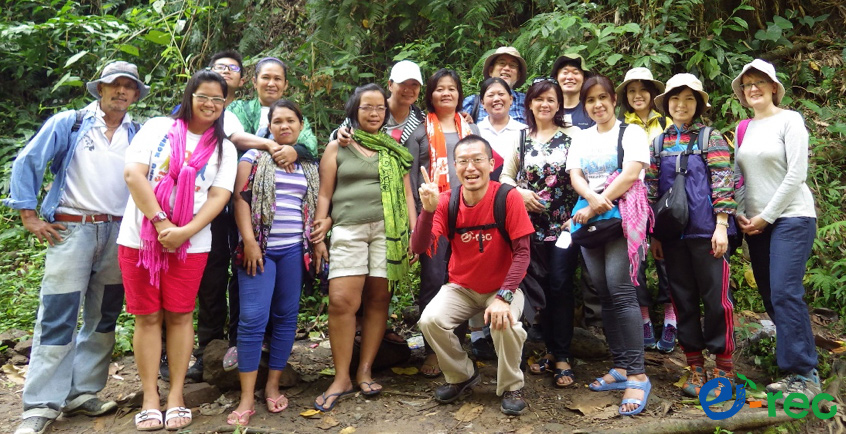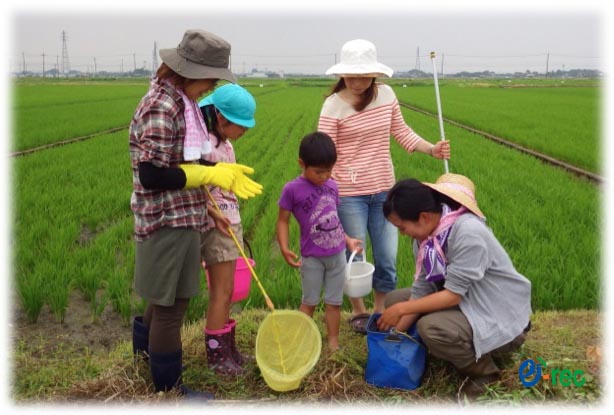
Research background and objectives
Technological innovations in the use of nutrients for food production, in particular nitrogen and phosphorus, have allowed global increases in population and economic prosperity in the twentieth century. Overexploitation of nutrient resources, however, aff ects biogeochemical cycles can lead to nutrient imbalances, eutrophication and loss of biodiversity. It is now recognized that nutrient imbalances and biodiversity loss are prevalent in watersheds around the world, and pose a risk to sustainable human development. In spite of such risk, most citizens are not so interested in global environmental issues but are rather concerned about local issues related to their lives and livelihoods. Considering this dissonance in environmental consciousness, we aim to develop a framework for adaptive governance of sustainable watershed systems (Fig. 1).
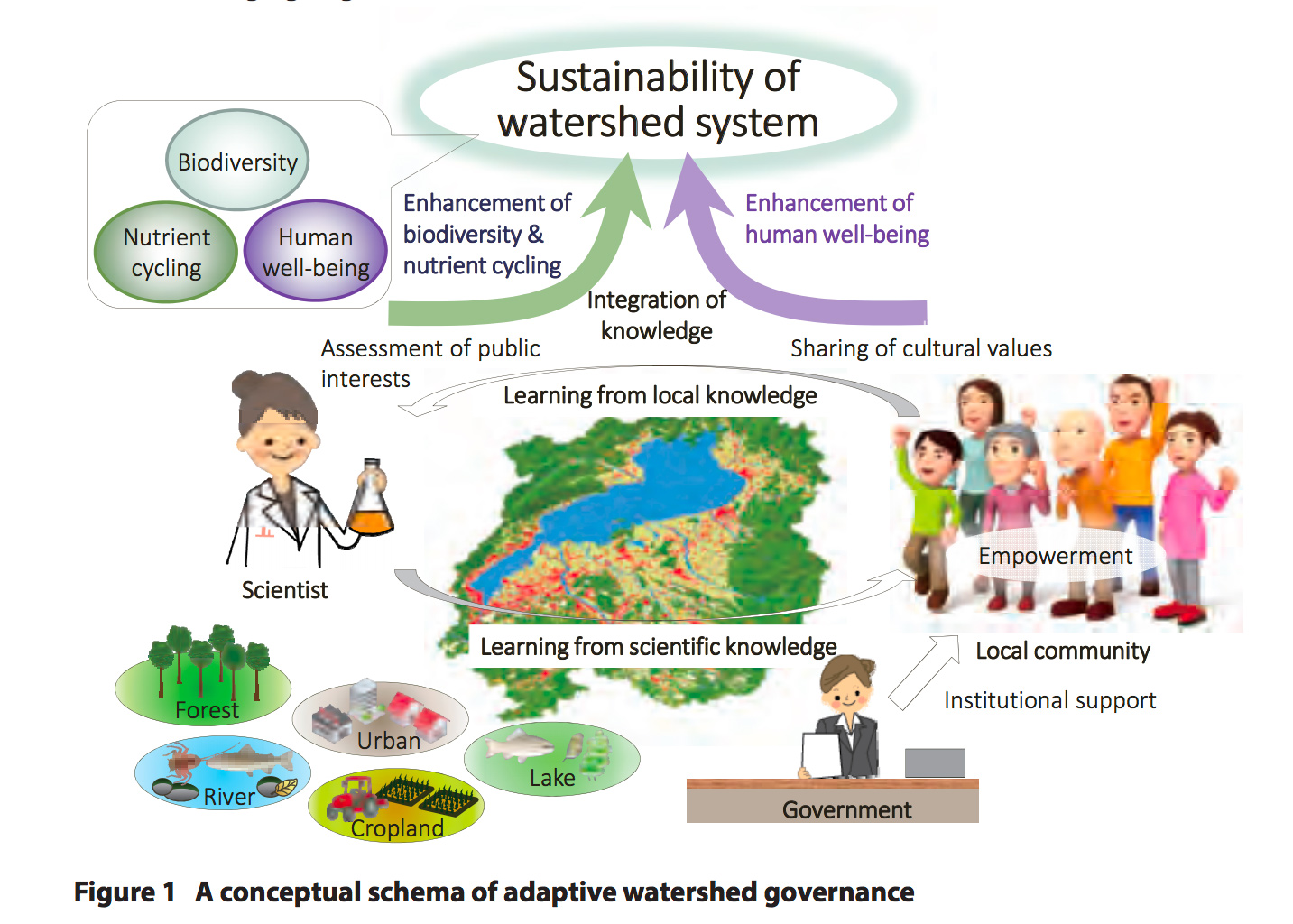
We facilitate stakeholder engagement in multi-level and multi-scale governance in order to enhance biodiversity, nutrient cycling and human well-being, according to our hypothesis that these are the three primary components for sustainability of social-ecological system and, like gears, also interdependently linked in community activities (Fig.2). We begin with action research to empower members of each community within a watershed to conserve indigenous environmental icon, defi ned as indigenous nature with special signifi cance to local life and livelihood (Process A in Fig. 2). As the value of engaging in such conservation eff orts is shared among community members, community-based well-being is altered and reinforced through bonding social capitals in a positive feedback of biodiversity conservation and biodiversity-driven nutrient cycling. If such community activities enhance nutrient cycling at the watershed scale, they can stimulate strong collective public interest in ecosystem services. In disseminating our scientifi c understanding of the community dimensions of nutrient cycling in watershed-based societies, our project will facilitate social involvement in conservation activities as well as “green consumption” of local products by noncommunity members who appreciate the public interests. Such links accumulate bridging social capital and increase economic incentives (Process B in Fig. 2). With increased public interest in conservation activities, community members may also gain institutional support from local governments. Such integration of local and scientific knowledge further enhances community-based well-being, and leads to empowerment of community activities. To test this hypothesis, we apply our governance approach to two extreme systems in Asia: the Lake Biwa Watershed (Japan) and the Laguna de Bay Watershed (Philippines). The former is an infrastructure-oriented society and the latter a high-nutrient loading society
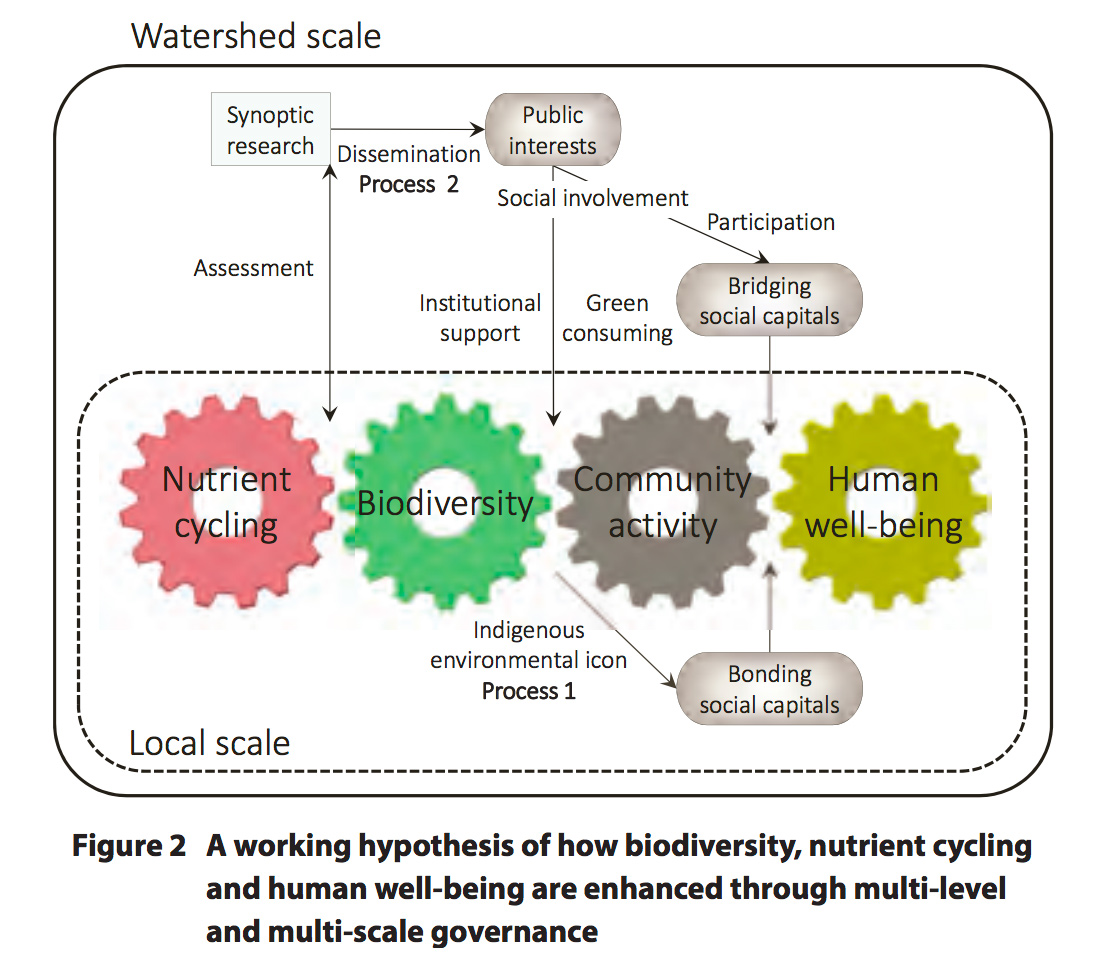
For the Lake Biwa Watershed, we practiced action research in the mid-stream community of the Yasu River subwatershed. Based on our exercises to explore the cultural signifi cance of indigenous nature, we identifi ed a brown frog as an indigenous environmental icon and began to work to conserve its habitat. Monitoring revealed that the brown frog prefers to spawn in paddy fi elds with wetland biotopes (Photos 1). Ths observation facilitated farmer engagement in conservation activities, as they shift ed from the modern to traditional paddy fi eld irrigation system. We have been able to observe how farmer engagement in the conservation activities has altered environmental consciousness, improving their sense of how their wellbeing is closely linked to natural capitals. In FR3, we will conduct fi eld experiments to demonstrate how traditional irrigation techniques are eff ective in reducing nutrient loadings from paddy fields. In the Laguna de Bay Watershed, in contrast, recent economic development has led to expansion of residential areas into the mid-stream area of the Silan-Santa Rosa sub-watershed. In downstream urban areas, nutrient loadings and eutrophication have led to serious loss of biodiversity (Fig. 3). At present, people within the watershed are dependent on groundwater resources for drinking and irrigation and therefore highly concerned about groundwater overexploitation and pollution. In FR3, we will disseminate the results of our research to discuss the solution strategy for these groundwater issues with a variety of stakeholders within this watershed. We will also conduct the action research to empower the midstream community to conserve a communal spring as an indigenous environmental icon (Photos 2).
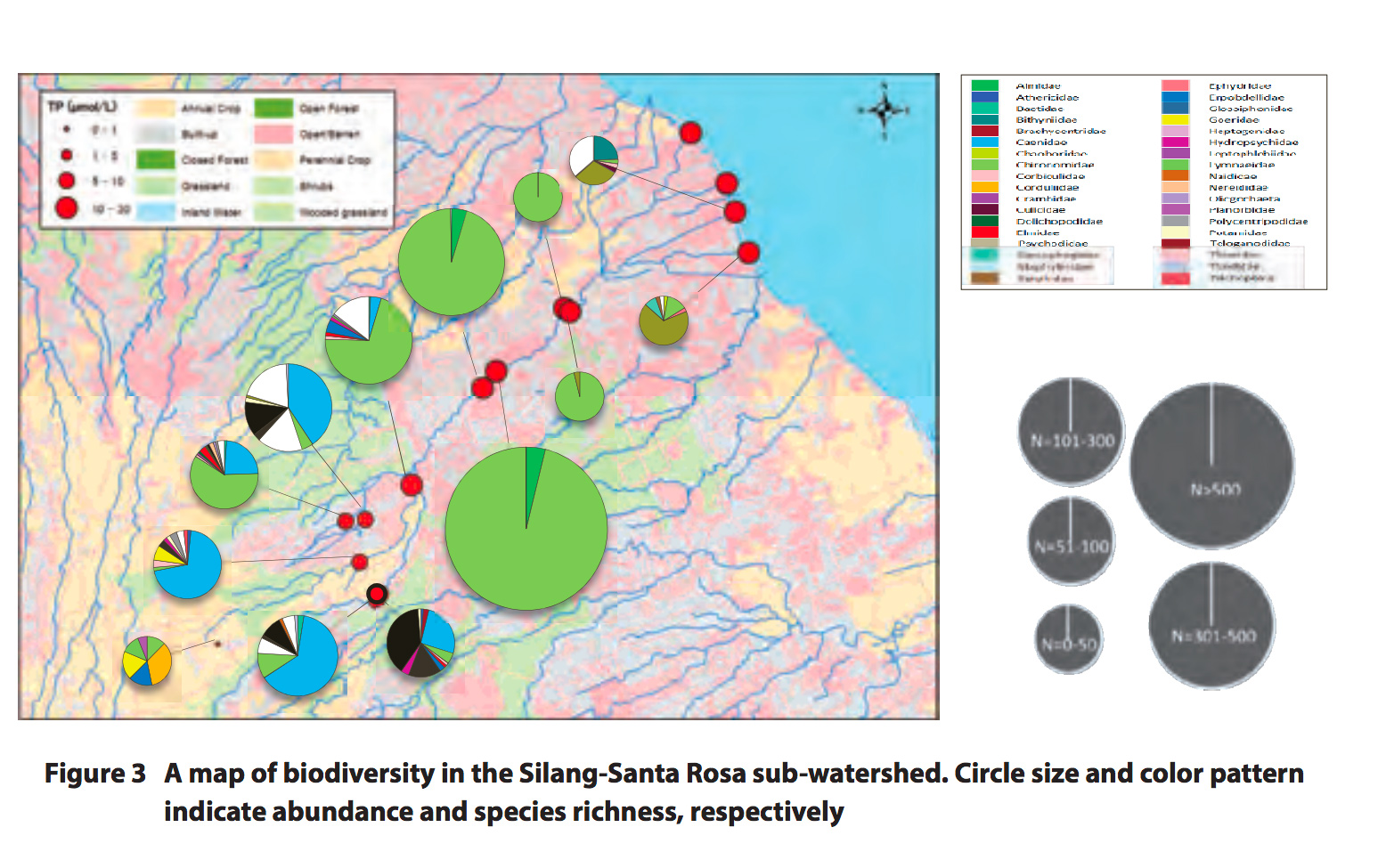
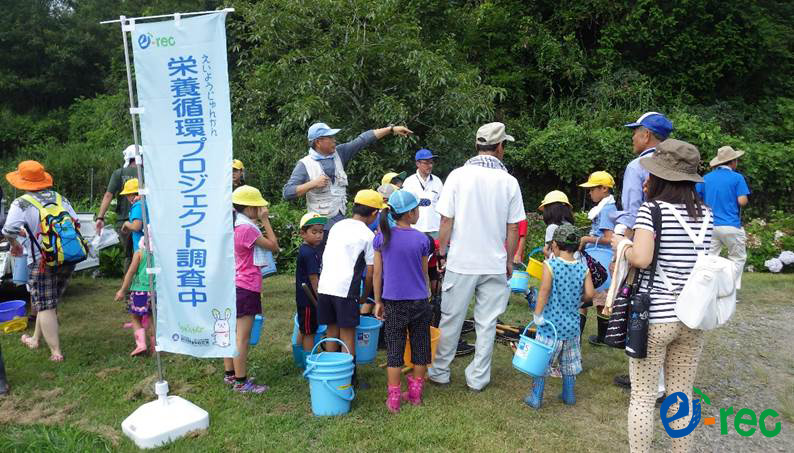
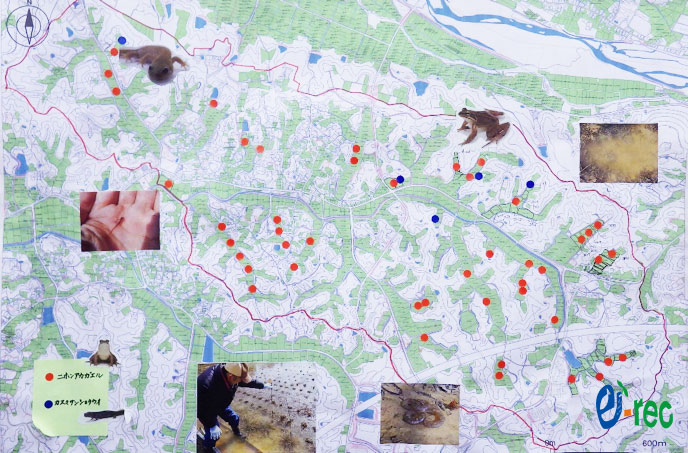
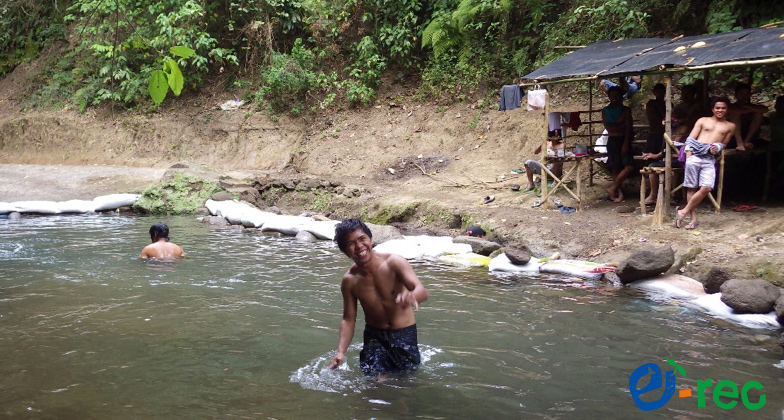

In developed societies, sewage treatment and tap water infrastructure systems have reduced eutrophication and led to greater comfort and convenience. Environmental consciousness, however, has receded from the nature of wetlands. What enhances our well-being? Is it enhanced by infrastructure? We want to seek answers to these questions together with a variety of stakeholders.

